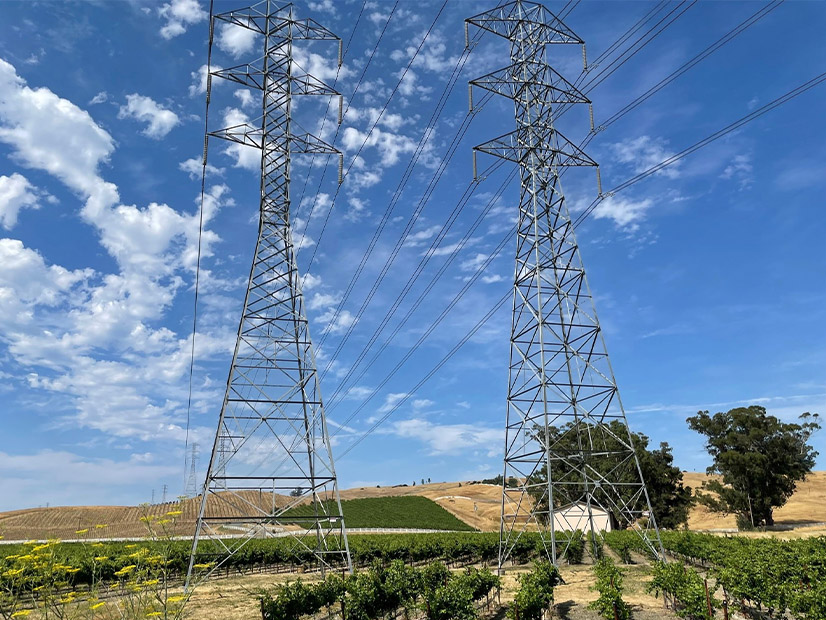FERC on Tuesday accepted CAISO’s proposed tariff revisions designed to help it deal with the overwhelming number of interconnection requests it received in 2021 and again this year (ER23-2058).
During the filing window for Cluster 14 in April 2021, the ISO saw a 241% increase above its previous record for interconnection requests, and 20% more projects than expected stayed in the queue for the second phase of the cluster study.
“CAISO notes that the increase required CAISO to revise its interconnection study deadlines for Cluster 14, which the Commission approved in September 2021, shortly after Cluster 14 began,” FERC said.
The ISO received 544 interconnection requests totaling more than 350 GW in its Cluster 15 window this year, “a 45% increase above the Cluster 14 interconnection requests and a new record-high,” the commission noted.
CAISO contended that studying Clusters 14 and 15 at the same time was unworkable for the ISO and its transmission owners. It asked FERC to approve changes to its tariff that extend remaining Cluster 14 deadlines by two months and to pause Cluster 15 studies until it finishes with Cluster 14, “which effectively puts Cluster 15 on hold until September 26, 2024,” FERC said.
“CAISO represents that the unprecedented volume of interconnection requests in both Clusters 14 and 15 require additional time and process to complete,” it said.
Intervenors did not object, and FERC said it found the new timelines reasonable.
“CAISO explains why it is not possible to process Clusters 14 and 15 under the existing time frame in its tariff and proposes revisions that establish a transparent and reasonable approach for addressing the unprecedented challenges raised by Clusters 14 and 15,” FERC said. “Accordingly, we agree with CAISO that its proposal to extend the interconnection study deadlines for Cluster 14 will help ensure that, under the circumstances, CAISO and its transmission owners have sufficient time to study these interconnection requests.”
‘Unbearable’ Delays
Commissioner Allison Clements concurred, saying the time extensions sought by CAISO made sense to allow the ISO to deal with its “massive Cluster 14 interconnection queue cluster and to pause its even more massive Cluster 15 interconnection queue cluster.”
She added that the issues CAISO faces “are emblematic of the unbearable queue delays and costs that interconnection customers and utilities are facing around the country.”
“Order No. 2023, ‘Improvements to Generator Interconnection Procedures and Agreements,’ includes reforms that will improve interconnection processes across the country,” Clements said. “However, as I noted in my concurrence, while the rule ‘can be expected to improve matters, more will be necessary to solve the problem.’ Therefore, I urge all transmission providers to consider the additional reforms and improvements to generator interconnection processes that I discuss in detail in my concurrence to Order No. 2023.”
She appended her concurrence to Tuesday’s CAISO decision.
FERC approved Order 2023 on July 27, revising its pro forma generator interconnection queue rules to help clear up an immense national backlog of resources waiting to interconnect to the transmission grid. (See FERC Updates Interconnection Queue Process with Order 2023.)
“The final rule is one of the largest in FERC’s history,” Chair Willie Phillips said in a press conference after FERC’s monthly open meeting last week. “It represents the largest and most significant set of interconnection reforms since the pro forma interconnection procedures were created two decades ago.”
“Our country has a severe interconnection backlog. Currently there are 2,000 GW of resources in interconnection queues, the largest backlog in history,” he said.
Clements concurred in Order 2023.
“As of the end of 2022, a staggering 10,000 projects representing over 2,000 GW of potential generation and storage capacity are stuck in line to connect to the grid,” she wrote. “That is nearly double the 1,250 GW of total installed capacity in the United States today.”
Order 2023 will improve the situation, but more is needed, she said.
Her 23-page concurrence discussed “deeper reforms that get at some of the remaining fundamental challenges with interconnection processes.” It also addresses “additional nuts and bolts changes that could enhance the effectiveness of a variety of interconnection processes, but which were not part of the proposal giving rise to this final rule,” Clements said.

